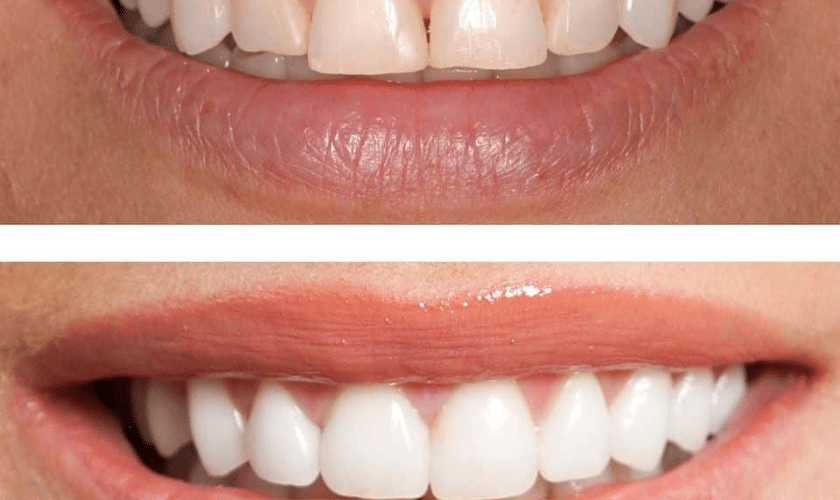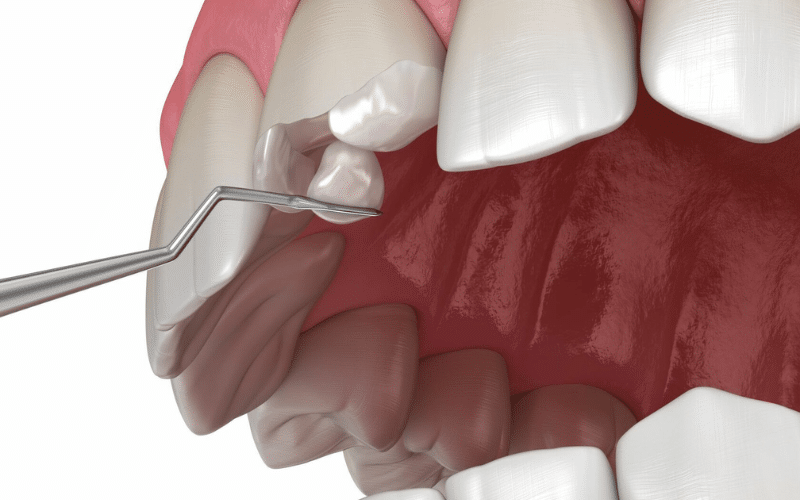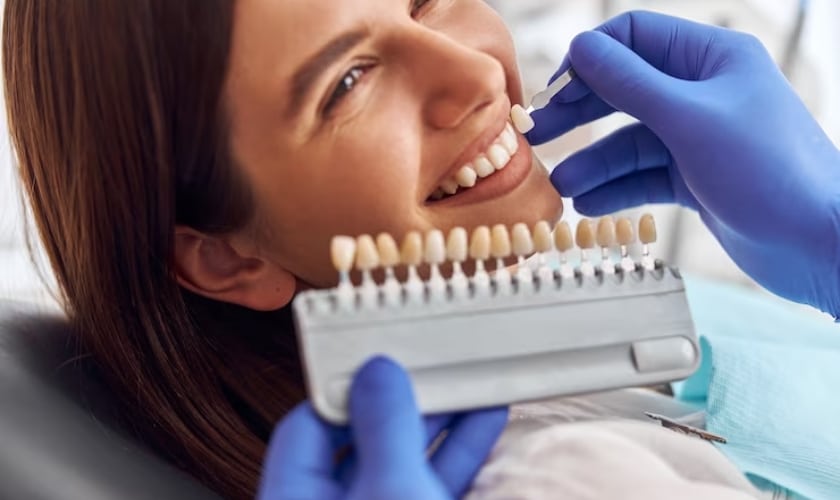
When to Get Dental Bonding?
A captivating smile is often considered the best accessory one can wear, but what if dental imperfections are holding you back? Enter dental bonding, a cosmetic dentistry marvel that can transform your smile seamlessly. In this blog, we’ll delve into the world of an important division of cosmetic dentistry, exploring when it’s the ideal solution to restore your teeth’s natural beauty.
Understanding Dental Bonding
Bonding is a transformative cosmetic dentistry procedure that goes beyond mere aesthetics; it’s about restoring confidence and functionality to your smile. Let’s delve deeper into this innovative technique to comprehend its intricacies.

Composition of Dental Bonding Material:
The magic lies in the bonding material itself – a composite resin composed of a mixture of plastic and glass. This material is not only durable but also mimics the natural translucency of your teeth. The result? A seamless blend that’s virtually indistinguishable from your natural teeth.
Temporary vs. Long-Term Solutions:
While dental bonding is a fantastic solution for various issues, it’s essential to recognize its longevity. Bonding may not be as durable as alternatives like crowns or veneers, and it can be more prone to staining over time. However, with proper care and maintenance, this can last for several years, providing a reliable and cost-effective option for smile enhancement.
Complementary Procedures:
In some cases, dental bonding may be part of a comprehensive smile makeover. Your dentist might recommend it in combination with other procedures to achieve optimal results. Understanding how bonding fits into the broader picture of your dental care allows for a more informed decision-making process.
Versatility in Applications:
One of the standout features of dental bonding treatment is its versatility. It’s a solution for an array of dental imperfections, whether your concern is a chipped tooth from an unfortunate encounter with a popcorn kernel or an unsightly gap that’s been bothering you for years.
Non-Invasive Nature:
Unlike more extensive dental procedures, bonding is a non-invasive option. Your dentist can typically perform the entire process in a single office visit, sparing you from prolonged discomfort and multiple appointments. It’s a convenient and efficient way to enhance your smile without a significant time commitment.
When to Consider Dental Bonding
Understanding when to opt for this cosmetic procedure involves recognizing specific issues that dental bonding can address with precision and finesse. Let’s explore a more detailed perspective on the diverse scenarios where dental bonding shines.
Chipped or Cracked Teeth
Dental bonding is particularly effective in repairing minor to moderately damaged teeth, whether from accidental trauma or the wear and tear of daily life. By seamlessly bonding the chipped or cracked portions, the procedure not only restores aesthetics but also helps maintain the integrity of the tooth structure.
Tooth Gaps
Dental bonding provides an excellent solution for closing small gaps between teeth. As a result, it offers a more conservative alternative to orthodontic treatments. The bonding material can be strategically applied to create a harmonious balance, ensuring your smile appears symmetrical and cohesive.
Discolored Teeth
Stubborn discoloration or intrinsic stains that resist traditional whitening methods can be effectively concealed with dental bonding. The dentist carefully matches the shade of the bonding material to your natural teeth, ensuring a seamless and uniform appearance.
Misshapen Teeth
Bonding can be used to reshape misshapen teeth, restoring balance to your smile and addressing any irregularities in tooth shape. By sculpting the bonding material, dentists can enhance the contours of your teeth. It contributes to an overall improved aesthetic.
The Procedure
The bonding procedure is a fascinating journey that combines skillful artistry with advanced dental technology. Let’s take a closer look at the comprehensive process involved in transforming your teeth and achieving that picture-perfect smile.
Initial Consultation: The journey begins with an initial consultation with your dentist. They assess your dental concerns, discuss your aesthetic goals, and formulate a personalized plan tailored to your unique needs.
Tooth Preparation: To ensure optimal bonding, the dentist lightly etches the surface of the tooth. This creates a microscopically rough texture that enhances the adhesion of the bonding material.
Application of Bonding Material: The dentist skillfully applies the tooth-colored composite resin in layers. Each layer is meticulously sculpted to achieve the desired shape and contour.
Curing with a Special Light: Once the bonding material is applied and shaped to perfection, a special curing light is used to harden and set the resin. This process, known as photopolymerization, takes only a few seconds for each layer.
A radiant smile is within reach, thanks to the wonders of dental bonding. Whether you’re dealing with chips, gaps, discoloration, or misshapen teeth, bonding offers a versatile and practical solution. Knowing when to opt for dental bonding empowers you to take control of your dental aesthetics. Schedule a consultation with your dentist, explore the possibilities of dental bonding, and embark on a journey towards a more confident and dazzling smile. Say goodbye to imperfections and hello to the radiant smile you deserve!





